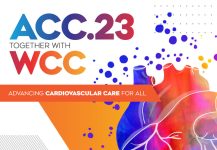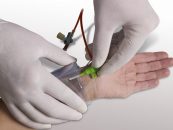Multiple studies support the use of an early invasive approach in high risk patients with non-ST elevation acute coronary syndrome (NST ACS). This benefit of an invasive strategy over the expected management has been shown in randomized studies and meta-analysis. Patients with a history of cardiac artery bypass graft (CABG) represent approximately 10% of ACS…
ACC 2023 | Complete Revascularization Strategies in patients with ACS and Multivessel Disease
In patients with acute coronary syndrome (ACS) and multivessel disease, complete revascularization is associated with better clinical outcomes. However, for non-culprit vessel revascularization the strategy remains unclear. The aim of this multicenter, open label, randomized, non-inferiority study, was to determine whether complete revascularization during index procedure is non inferior vs. staged. Primary end point was…
Can We Use DAPT for 3 Months in Acute Coronary Syndrome?
Current guidelines recommend 12-month dual antiplatelet therapy (DAPT) after DES stenting for acute coronary syndrome (ACS) because of elevated MACE risk. The development of more modern stents, with thin and ultrathin struts, compared against prior versions, has resulted in more effective devices in terms of stent thrombosis and restenosis. Prolonged DAPT has been associated with…
Use of OCT FFR on ACS Clinical Outcomes
Patients undergoing acute coronary syndrome (ACS) benefit from percutaneous coronary intervention (PCI). At present, there is no question about this. However, residual ischemia after PCI is associated with a worse prognosis. Angiography studies and intravascular imaging are useful to assess post intervention outcomes, but they are limited when it comes to the physiological assessment of…
Adherence to P2Y12 Inhibitors in Acute Coronary Syndrome: Prognosis
Non-adherence to medication in patients with acute coronary syndrome (ACS) remains to be solved; the use of polypills and a closer follow up have been tried out (follow up calls and motivation groups). Antiaggregation guidelines recommend dual antiplatelet therapy (DAPT) for at least one year after ACS. Adherence to drug treatment is comprised of multiple…
When is the Ideal Timing for NSTE-ACS Percutaneous Intervention?
According to the European Society of Cardiology (ESC Guidelines 2021) an early invasive strategy is recommended (<24h) for high-risk patients with acute coronary syndrome with no ST elevation (NSTE-ACS), namely patients presenting a rise or fall in cardiac troponin, dynamic ST- or T-wave changes and GRACE risk score >140. Early intervention (<2h) is reserved for…
Acute Coronary Syndromes After TAVR: Frequent and Not All Undergo Coronary Angiography
Approximately 10% of patients who undergo transcatheter aortic valve replacement (TAVR) are readmitted for an acute coronary syndrome after a mean follow-up of 25 months. Male sex, prior coronary artery disease, and (surprisingly and hard to explain) nontransfemoral approach were independent predictors of acute coronary syndrome after TAVR, an event associated with high midterm mortality. While…
Patients with Plaque Erosion: Management without Stenting
This small study presented at ESC and simultaneously published in the European Heart Journal evaluated patients undergoing acute coronary syndrome caused by plaque erosion identified by optical computed tomography (OCT). The study showed it can be managed with conservative antithrombotic therapy and without stenting. Patients with plaque erosion can receive dual antiplatelet therapy, ticagrelor and aspirin…
No Extra Benefit for Combined Use of Bivalirudin and Transradial Approach
The aim of this meta-analyzis was to study the relation between bivalirudin and access site in patients undergoing acute coronary syndrome (ACS). Both bivalirudin and the transradial access site are strategies aiming at reducing bleeding complication in patients with ACS undergoing invasive approaches. The interaction of both strategies and the potential benefits of their combined use…
MATRIX: Transradial vs. Femoral Access in Non-ST Elevation AMI
Original Title: Radial versus femoral access in patients with acute coronary syndromes with or without ST-segment elevation. Presenter: Bernardo Cortese. The MATRIX study showed that the transradial access is associated with a reduction of combined events, death, infarction, stroke and bleeding, compared to femoral access, in ACS patients. The goal of this sub-analyzis was…
- 1
- 2









